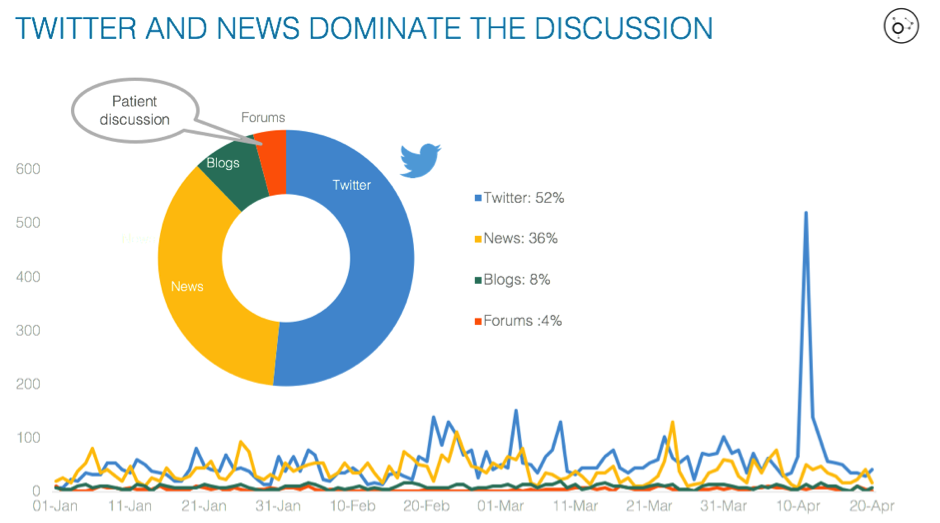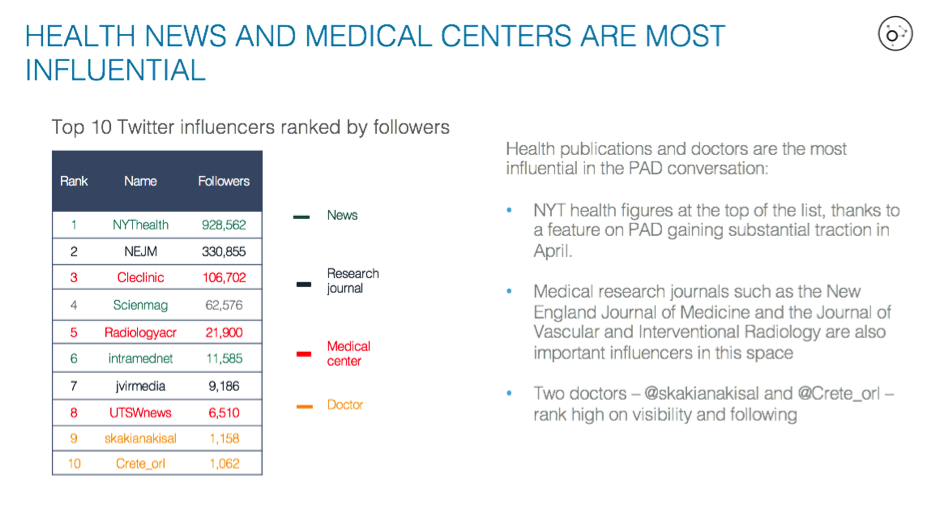#SnapChart: Have you ever heard of Peripheral Arterial Disease?
Here at Pulsar, we research a great variety of topics for an equally great range of industries. One of the industries we’re looking at is healthcare, and one of our recent findings shows that there is very little awareness online of Peripheral Arterial Disease (PAD) beyond the medical sphere, despite being a very common circulatory problem.
Looking at the graph below, you can see a small yet consistent flow of news and articles circulating in the first few months of this year, making up about 36% of all PAD conversation. Simultaneously, this small but systematic flow of information has led to increased online conversation. In April, we see Twitter conversation on PAD suddenly sky rocket, with over 50% of conversation happening on this platform. This dramatic rise is due to a huge number of shares of a New York Times’ feature claiming “Millions With Leg Pain Have Peripheral Artery Disease.”
This particular article was shared on an account with a huge amount of reach. Specific accounts and influencers who have a wide audience reach often cause news stories or trends to travel wider across the internet. It appears that health publications and doctors are by far the most influential people in PAD conversation, proving that people are using these channels to find credible sources for accurate information. If we were to delve deeper into the demographics, it would be possible to find out details like age, gender and location – which would be incredibly useful for predicting future health concerns and giving targeted help to those who need it.
Due to its nature, it is a fair assumption that Twitter has historically been seen as a more unconventional symptom checker. The mass of unfiltered opinions prompts people to sift through information as and when they need it. Social media users have therefore over time adapted and become better at judging the validity of sources. Twitter offers real-time updates and people benefit from having their finger on the pulse, especially for under-reported health concerns like PAD.
Over the years, we’ve seen Twitter develop into a legitimate real-time news source, and we can see it establishing itself now as a source for facts and information on both current and emerging health related information. For those in pharmaceutical or healthcare industries, these insights will be particularly beneficial for predicting imminent health concerns, and reacting to conversation where and when it is needed.
If you would like to find out more about understanding audience insights, or conversations around healthcare online, please send us an email on [email protected].


